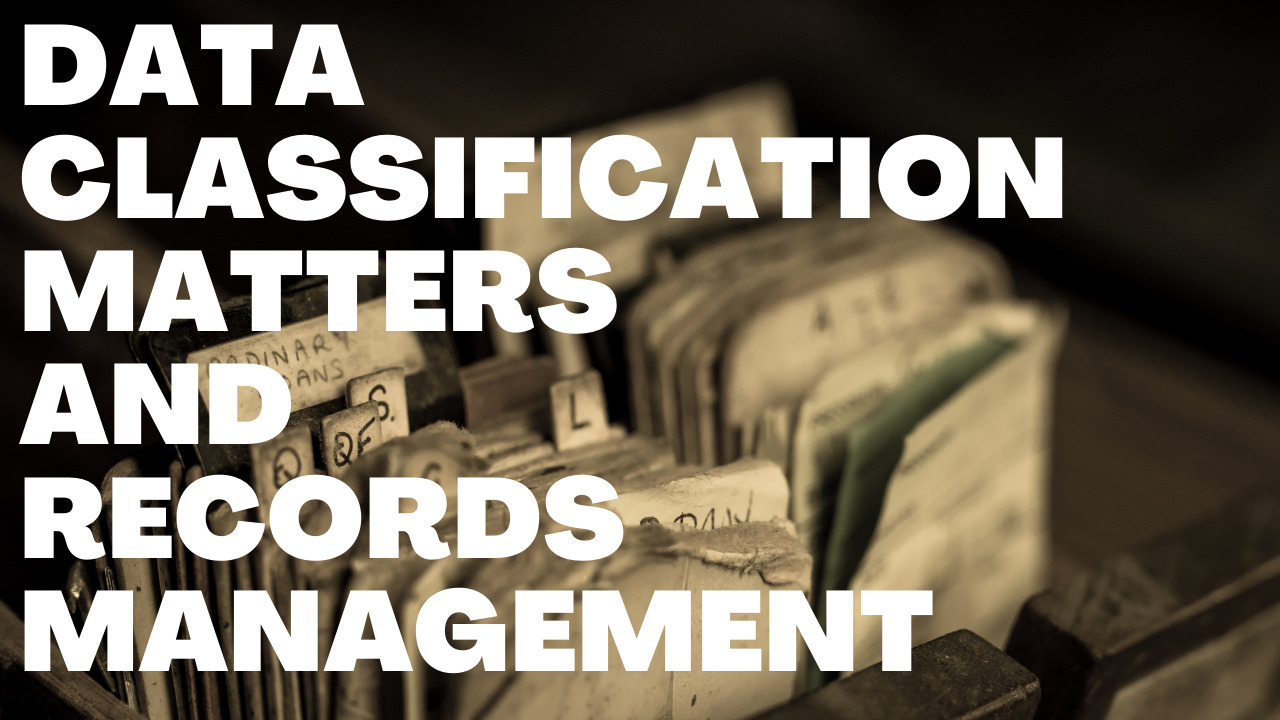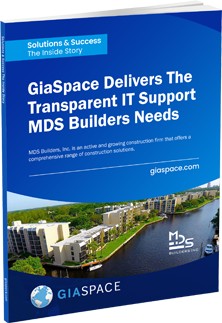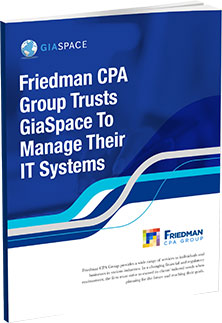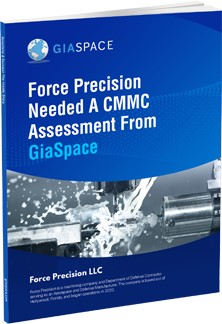Why Data Classification Matters for Records Management Success
Key Points:
- Records management (RM) is the administration of digital or paper records. It includes the creation, maintenance, and destruction of records.
- RM aims to ensure that records are created and maintained to facilitate their retrieval and use while ensuring their authenticity, integrity, and reliability.
- Data classification is a core component of records management. It organizes data into categories to manage it more effectively.
With the proliferation of electronic records, it is essential to classify and manage them in accordance with their value and legal requirements. Discussions surrounding records management and data classification often lead to debates. Stakeholders tend to have very different opinions on what should be done with an organization’s data and how that data should be managed. However, some general principles can help to guide these discussions and lead to more productive outcomes.

Records Management: A New Approach to an Old Problem
As the world becomes increasingly digital, organizations find that their traditional methods of managing paper records are no longer effective. As a result, many are turning to records management solutions that can help them manage both digital and paper records. Records management is not new, but it has changed how it is approached.
In the past, records management was often seen as a compliance issue. Organizations were required to keep certain records for a certain period, and they needed to ensure that those records were properly stored and maintained. While compliance is still an important part of records management, the focus has shifted to include a wider range of benefits.
Today, records management is seen as a way to improve efficiency, save money, and protect an organization’s data. By properly managing their records, organizations can reduce the storage space they need, make it easier to find and retrieve information, and ensure that their data is properly protected.
There are several benefits to implementing a records management solution, including:
- Improved efficiency and productivity: A records management solution can help organizations more effectively manage their records, saving time and money.
- Reduced risk: A records management solution can help organizations to reduce the risk of losing important records.
- Compliance: A records management solution can help organizations to meet their legal and compliance obligations.
- Improved decision making: A records management solution can help organizations to make better decisions by providing easy access to records.
To have an effective records management program, it is important to first establish a clear understanding of the organization’s data and its location. This can be difficult, as data is often spread across different departments and systems. Once the data has been identified, it needs to be classified into different categories. This will help to determine how the data should be managed and what level of protection it requires.
Once the data has been classified, it is important to establish management rules and procedures. These rules should be designed to ensure that the data is accessible when needed and protected from unauthorized access. The procedures should also be reviewed regularly to ensure they are still effective.
It is also important to plan how data will be disposed of when it is no longer needed. This plan should ensure that the data is securely destroyed and that no unauthorized access to the data is possible.
How Do I Get Started With Records Management?
There are four basic steps involved in getting started with records management:
- Determine what type of system will work best for you. There are many different ways to organize your papers and documents, so take some time to explore your options and find what works best for you.
- Identify which papers and documents need to be kept. Not everything needs to be saved forever, so it’s important to know what can be safely discarded and what needs to be kept long-term.
- Store your papers and documents in a safe place. Once you’ve determined what needs to be kept, ensure it’s stored properly, so it doesn’t get lost or damaged.
- Maintain your system on an ongoing basis. Implementing a records management system is not a one-time task; it’s something you’ll need to do on an ongoing basis as new papers and documents come in.
What Is Data Classification?
Data classification is organizing data into categories that can be used to manage the data more effectively. One of the most important aspects of data classification is determining how data should be categorized. Data classification schemes typically use a hierarchical structure to organize data.
However, there are many different ways to approach data classification. The best approach will vary depending on the type of data being classified and the goals of the classification scheme. In general, however, data classification schemes should be designed to meet the following criteria:
- The categories should be clearly defined, so there is no ambiguity about what data belongs in each category.
- The categories should be mutually exclusive so that each piece of data can only be classified into one category.
Workplace data can be classified into four primary categories: public, internal use only, confidential, and restricted.
- Public data is information that can be accessed by anyone without restriction. This category includes information typically published by the organization, such as press releases, product descriptions, and marketing materials.
- Internal use only data is information that is not intended for public release. This category includes employee records, financial data, and trade secrets.
- Confidential data is information that must be kept secure and is only accessible to authorized individuals. This category includes supplier contracts, customer lists, and product development plans.
- Restricted data is information subject to special restrictions, such as legal limitations on its use or disclosure. This category includes personal Identifiable Information (PII) and Health Insurance Portability and Accountability Act (HIPAA) data.
There is a reason why data classification is a critical component of effective records management. Without proper data classification, your records management efforts are likely to fail. Data classification provides a framework for understanding the value of data and how it should be protected. When data is properly classified, organizations can make informed decisions about how to store, manage, and dispose of data.
Increasing Records Management Compliance in Your Organization
Records management compliance is critical for any organization. Maintaining accurate records helps to ensure the safety and security of your business operations and protect your customers, employees, and other stakeholders.
There are several steps you can take to increase records management compliance in your organization, including:
- Define your records management objectives and goals.
- Implement policies and procedures for records management.
- Educate employees on records management compliance.
- Conduct regular audits of your records management system.
- Implement technology solutions to automate records management.
Data governance is critical to the success of any organization. You must ensure that your organization complies with records management regulations and best practices. Implementing these practices can help safeguard your data and improve your bottom line.
Wrapping Up
When it comes to records management, there is no one size fits all solution. The best approach depends on the organization’s specific needs and the type of records being managed. Many different records management systems and software are available, so it is important to research to find the one that best suits your needs. Whatever system you choose, it is important to ensure that it is properly implemented and regularly reviewed to meet your organization’s needs.







